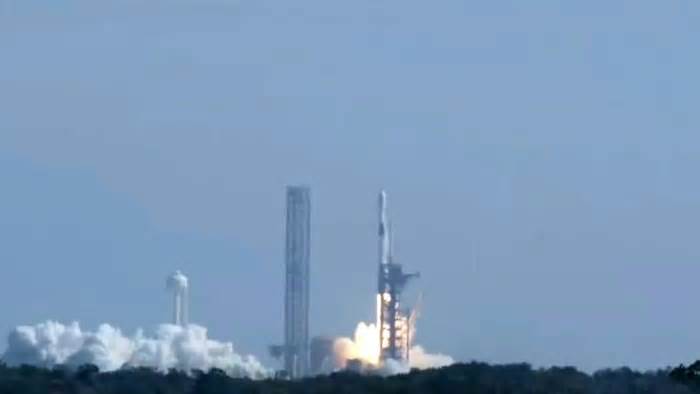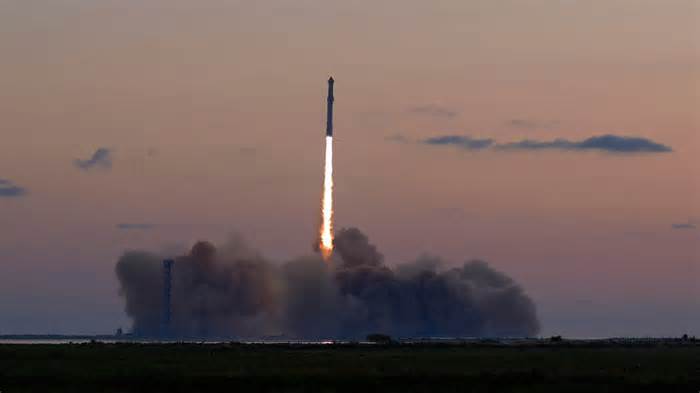
Musk’s SpaceX to help India launch heavyweight satellite on Tuesday
- by Indiatimes
- Nov 16, 2024
- 0 Comments
- 0 Likes Flag 0 Of 5

Updated: Nov 17, 2024, 02:10 IST
Share Follow us
Elon Musk's SpaceX will launch India's heavy communication satellite, Gsat-20, on November 19th. Weighing over 4 tonnes, the satellite exceeds the capacity of India's current launchers, necessitating the use of SpaceX's Falcon-9. This comes as Arianespace lacks available slots and other options remain unviable.
NEW DELHI: Elon Musk, who supported Donald Trump in his victory in the US presidential election, will now bail out India. Musk-owned American space company SpaceX will launch one of India’s heaviest communication satellites, Gsat-20, weighing 4,700 kg.
Confirming this to TOI, Isro chairman S Somanath said, “SpaceX’s Falcon-9 will launch Isro’s Gsat-20, also called GSAT N-2, on Nov 19.”
Isro’s heavy lifter LVM-3, popularly known as ‘Bahubali’ or ‘Fat Boy’, can lift satellites weighing up to four tonnes into the geostationary transfer orbit (GTO). However, as Gsat-20 weighs more than four tonnes, Isro is seeking help from SpaceX for launching its satellite with its heavy-lifter Falcon-9 rocket, which can launch payloads of 8300 kg or 8.3 tonnes to GTO.
Isro was till now dependent on Arianespace to launch its heavier satellites, but the European space rocket at present lacked commercial slots for the Gsat-20 launch. This is because Arianespace’s Ariane-5 rocket retired last year and commercial satellite slots for the next few launches of its successor Ariane-6 are already booked. With Russia engaged in the Ukraine conflict and China’s commercial services never considered by India, SpaceX is the only reliable option for India.
The Gsat-20 or GSAT N-2, a continuation of the Gsat series of communication satellites, is funded, owned and operated by Isro’s commercial arm New Space India Ltd. The satellite, which has a mission life of 14 years, features a Ka-band high-throughput communications payload with 70 Gbit/s throughput utilising 40 beams offering HTS capacity of nearly 48Gpbs. Each beam will have two polarisations, effectively making them 80 beams.
The satellite is intended to add data transmission capacity to the communication infrastructure required by the Union govt’s Smart City mission. It will also help enable in-flight internet connectivity.
The satellite was initially expected to be launched on an Isro’s LVM-3 rocket, but was later shifted to Falcon-9 due to the satellite being 700 kg overweight.
As India lacks a launcher for over four-tonne satellites, Isro has now fast-tracked the development of its Next Generation Launch Vehicle (NGLV). The Rs 8,240-crore NGLV program is designed to enhance payload capacity threefold compared to the current LVM3, while its cost will be only 1.5 times more. NGLV is designed to have a maximum payload capability of 30 tonnes to the Low Earth Orbit and will also have a reusable first stage. It will also be able to carry payloads around 10 tonnes to GTO.
End of Article
Please first to comment
Related Post
Stay Connected
Tweets by elonmuskTo get the latest tweets please make sure you are logged in on X on this browser.
Sponsored
Popular Post
Tesla: Buy This Dip, Energy Growth And Margin Recovery Are Vastly Underappreciated
28 ViewsJul 29 ,2024






 Energy
Energy


















